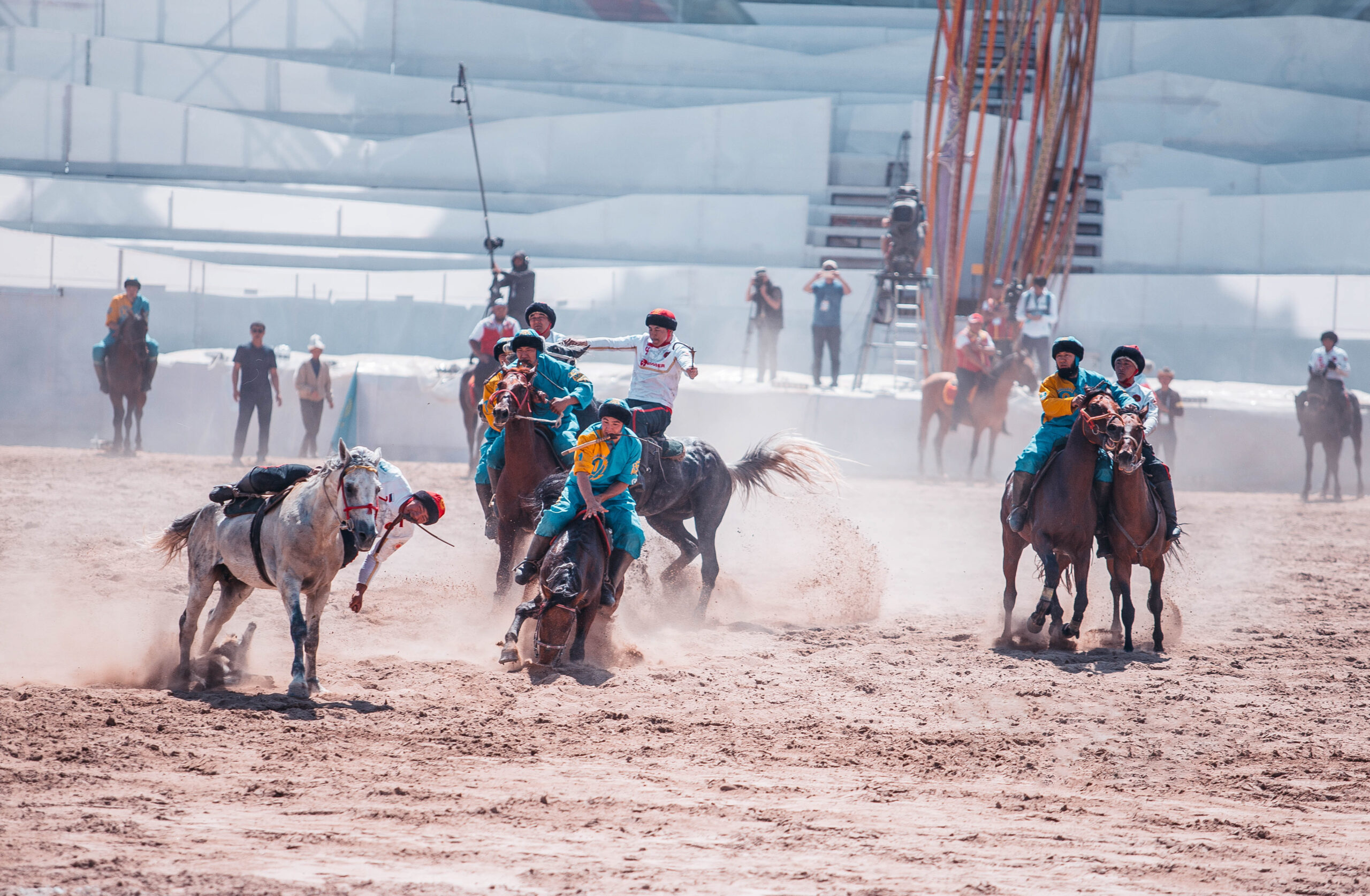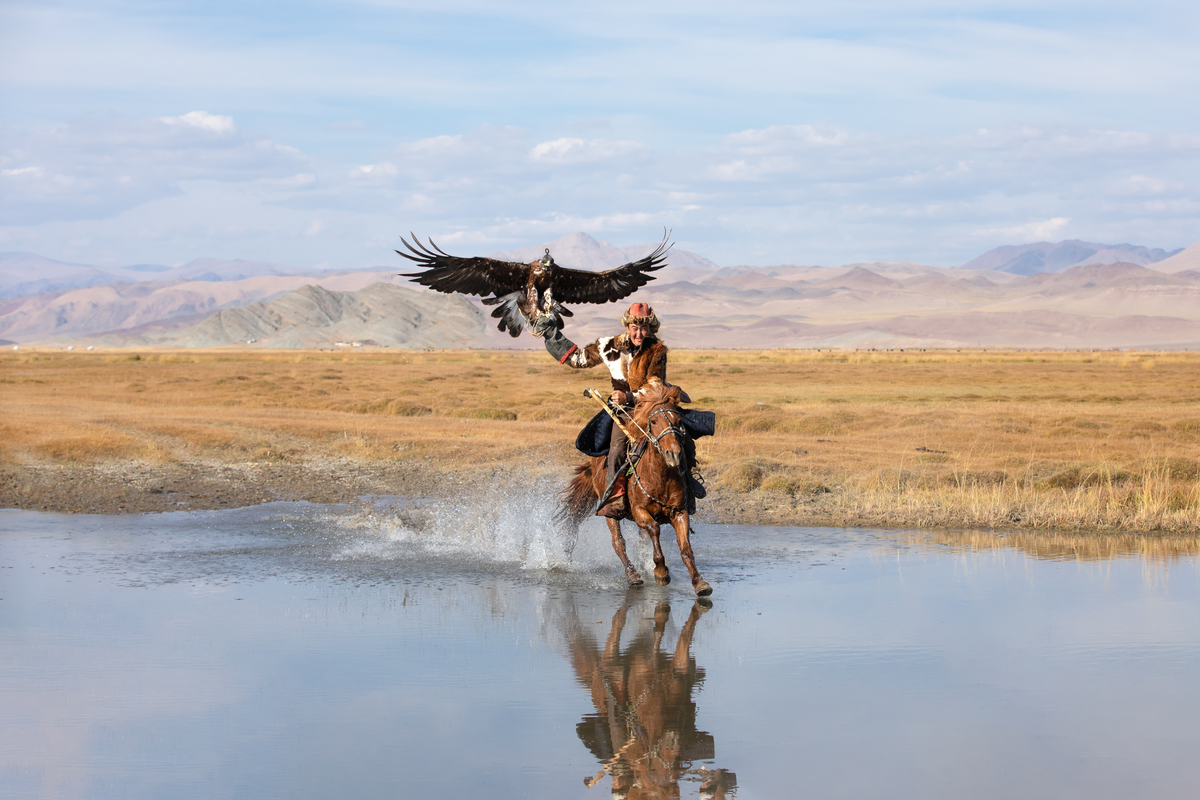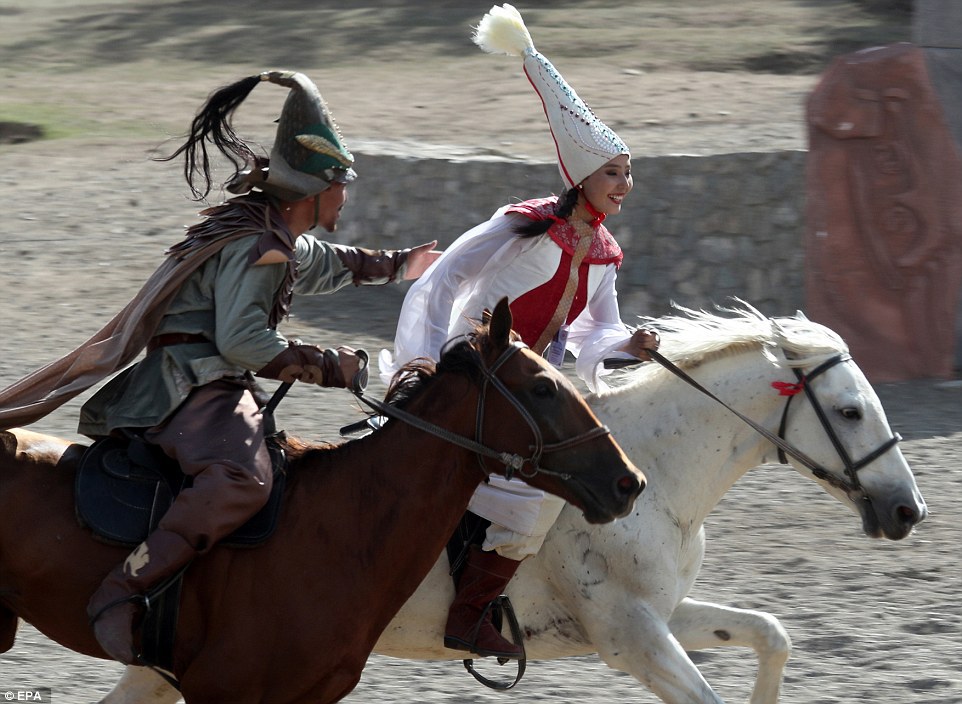ASTANA – March 20 marks the celebration of National Sports Day in Kazakhstan, dedicated to promoting physical activity and a healthy lifestyle while showcasing its integral role in the Kazakh culture.

Kazakh and Kyrgyz teams play kokpar game – traditional horseback competition.jpg Photo credit: istock.com
As part of the Nauryznama Decade, specific events are organized nationwide to showcase the diversity of national sports and participants’ skills. A special celebration is scheduled to take place at the Argymak equestrian sports and health complex in Astana, with anticipated participation from the United States delegation. During the event, delegates will attend demonstration performances and be introduced to the kokpar game.
National sports and games embody echoes of labor and spiritual activity, offering unique ethnocultural experiences appealing to both children and adults. Some games trace back to ancient times, persisting as part of Kazakhstan’s cultural heritage.
Kazakh culture, rooted in a nomadic lifestyle, is inseparable from horses. Equestrian games developed over time, enhancing strength, agility, and dexterity in riders while fostering spiritual unity among the people. These games are integral to major celebrations and events.
Among these traditional games, kokpar stands out—a test of riders’ strength, grip, and riding skills as they compete to seize and deliver a ram carcass to a designated point or toss it into a large cauldron. Today, kokpar is recognized as an official equestrian sport in Kazakhstan, Uzbekistan, the Kyrgyz Republic, and other Asian countries, with the prestigious kokpar championship held at the World Nomad Games.
Baige, a medium-distance horse race, is another cherished tradition held during various holidays, allowing participants of all ages to compete based on their horses’ age divisions. For horses under three years old the race covers a distance of up to two kilometers. Horses under four years old compete over a distance of up to five kilometers, while those over five years old race up to nine kilometers.

Eagle hunting. Photo credit: istock
Eagle hunting, an ancient nomadic tradition tracing back to the Saka period, remains deeply ingrained in Kazakh culture. Known as kusbegilik or sayat, this art of hunting with birds of prey holds a significant place in Kazakhstan’s cultural heritage, with competitions held to showcase the skills of berkutchi, or eagle hunters.
In January, Kazakh golden eagles kicked off a new sports season with a competition in the Almaty Region. The top berkutchi competed not only for a spot in the finals of the national competition but also for a chance to represent Kazakhstan at the fifth World Nomad Games scheduled to take place in Astana in 2024.
Kyz kuu, translating to “catch up with the girl,” adds a playful element to Kazakh festivities, where young girls and boys participate in a lively horseback chase, reflecting the rich tapestry of Kazakh customs. The game unfolds in a colorful spectacle: upon a signal, a girl mounts a horse and gallops toward a designated flag, followed shortly after by a boy attempting to catch up and steal a kiss. If the boy fails to do so before reaching the finish line, the tables turn as the girl then pursues him back to the starting point, wielding a whip to playfully “punish” him. Typically, the chase covers a distance of 400-500 meters in one direction.

Kyz kuu, a traditional horse game, translates as catch up with the girl. Photo credit: EPA
Togyzkumalak (nine pellets), a board game promoting logical and mathematical thinking, has been recognized as part of the United Nations Educational, Scientific and Cultural Organization’s (UNESCO) Representative List of the Intangible Cultural Heritage of Humanity since 2020. The game is based on the number nine, considered sacred by the ancient Mongols and Turks. The rules of the game can be so difficult, it often takes more than five or six hours to complete one game.
The game is also included in the program of the fifth World Nomad Games. The uniqueness of the World Nomad Games stands out for their combination of sports, cultural, and scientific programs. The event will feature 20 competitive and 10 demonstration events, with 110 sets of medals at stake.
An estimated 4,000 participants from over 100 countries are expected to take part in the event, showcasing the global appeal and significance of nomadic traditions and activities.
Kazakhstan recently registered the ASYQ, International Federation of Nomadic Sports aiming to develop asyq atu sports globally. Asyq atu is a board game played with bones from a sheep’s knee joint. The federation’s goals include conducting in-depth studies of the game’s history, researching its health benefits, establishing new principles and equipment standards, and preparing for the World Nomadic Games, as well as the first World Championship.
In 2017, the game was added to UNESCO’s list of protected intangible cultural heritage objects. The number of people regularly participating in asyq atu is on the rise, with 89,432 athletes currently engaged in the sport.
Organizations from Kazakhstan,the Kyrgyz Republic, Mongolia, the Republic of Sakha (Russia), Romania and Türkiye have submitted membership applications for the federation. This year, memberships from sports organizations in China, Hungary, Spain, and Uzbekistan are also anticipated.

